What Makes The Tandem Experience Comfortable
Friday, December 31, 2021
A tandem skydive is the way most people have their first skydive experience. Since tandem skydiving began in the early 80s, a great many people have completed their first jump this way and we’ve become really good at making the tandem skydiving experience not only super exciting, rewarding and memorable, but also smooth and comfortable.
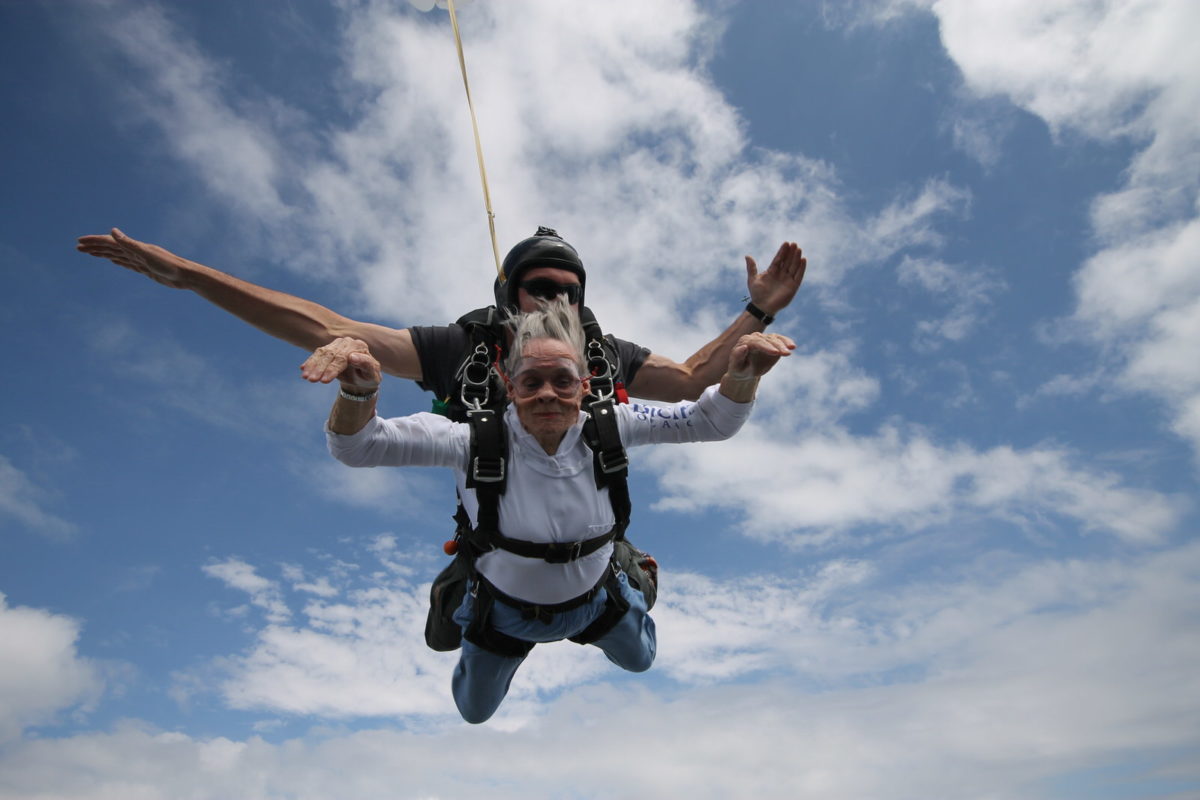
What Is Tandem Skydiving?
The word “tandem” refers to two things arranged one in front of the other. A tandem bike has two riders on a single set of wheels; a tandem skydive has two jumpers strapped to a single rig. Unlike the riders of a bicycle-made-for-two where both can flounder til they get the hang of it, tandem skydiving involves at least one very experienced skydiver taking command of the activity.
During a tandem skydive, the student is harnessed together with a highly skilled instructor. This genius process allows people with zero previous experience to get sky high without any pressure to perform or need for extensive training. The student does have some responsibilities, though. Here are some important things to know about tandem skydiving …
Arrival:
First things first – book your jump and arrive on time! While it may be possible to just show up and jump, you’ll have the best experience if we have you on our schedule.
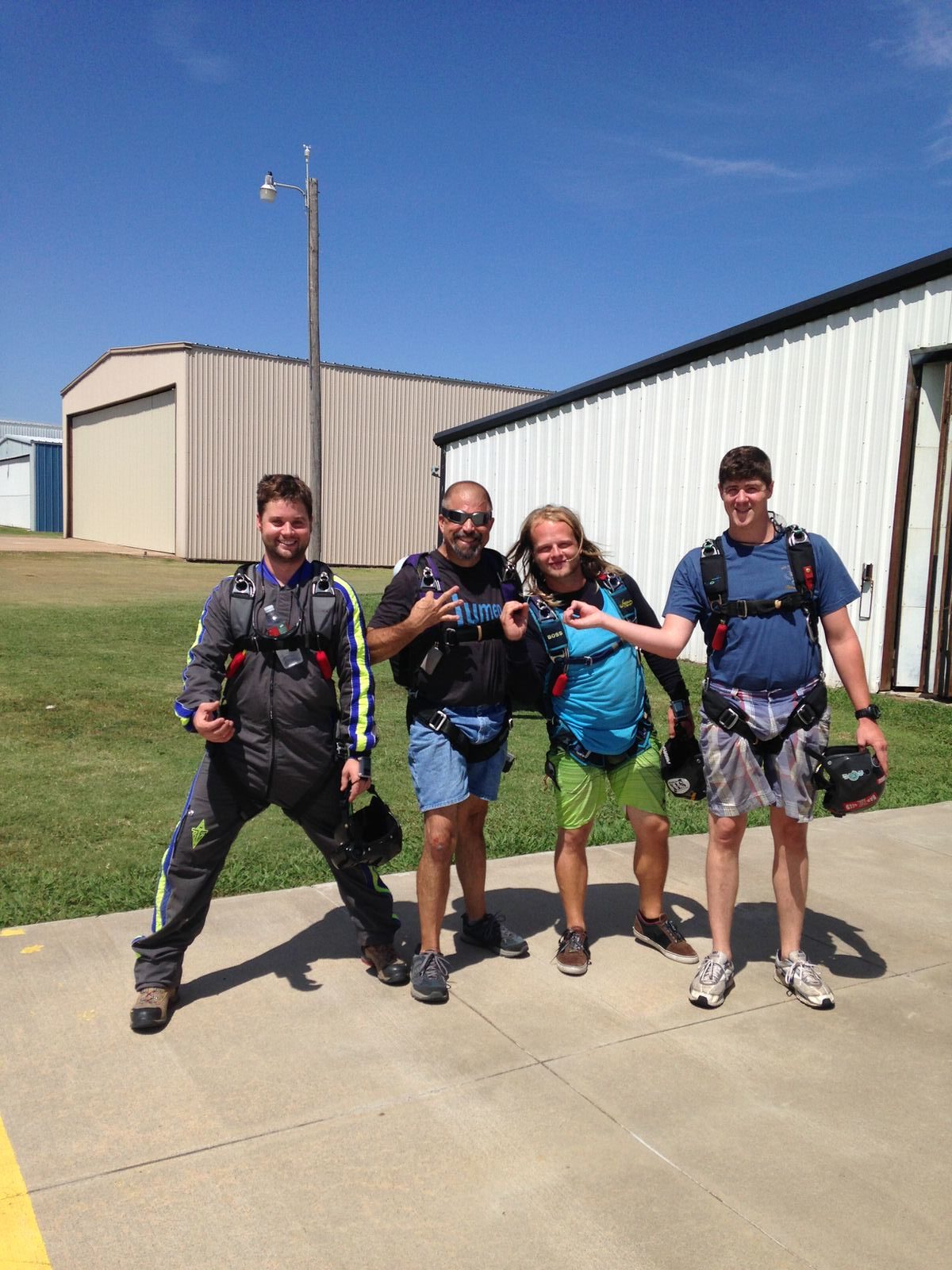
Second, bring your valid, government-issued, photo ID. The United States Parachute Association (USPA) – of which Oklahoma Skydiving Center is a Member Dropzone – is the governing body that oversees the industry in the US. In accordance with USPA rules, tandem skydivers must be at least 18 years old to jump. Lastly, check in! It’s quick and easy.
The Briefing:
The tandem skydive briefing is pretty concise, and only contains the information you really need for your first jump. We won’t overload you with information before you go because the goal is to get you up in the air as soon as possible. If you want to learn more, your instructor is an amazing source of information. (And, of course, you can come back for more if you want to learn how to go solo!)
The Equipment:
Skydiving gear is sophisticated and masterfully engineered. The adjustable harness system joins you to your instructor at the hips and shoulders, kind of piggy-back style, supporting you in all the right places. The instructor wears the parachute rig in what looks like a backpack. If the weather is on the cooler side, you will be given a jumpsuit to wear under the harness. In warmer conditions athletic wear is perfect, but skip the short shorts in the name of comfort in the harness.
The Plane Ride:
Skydiving aircraft are no frills in order to save weight and allow for maximal space. Everyone sits on the floor with backs to the pilot (and faces to the door, woot woot!). It’s first class in terms of safety but not comfort … but you’ll be comfy enough for the amount of time it’ll take to get to altitude. Here at OKC, our plane gets to 14,000 feet in about 10 minutes.
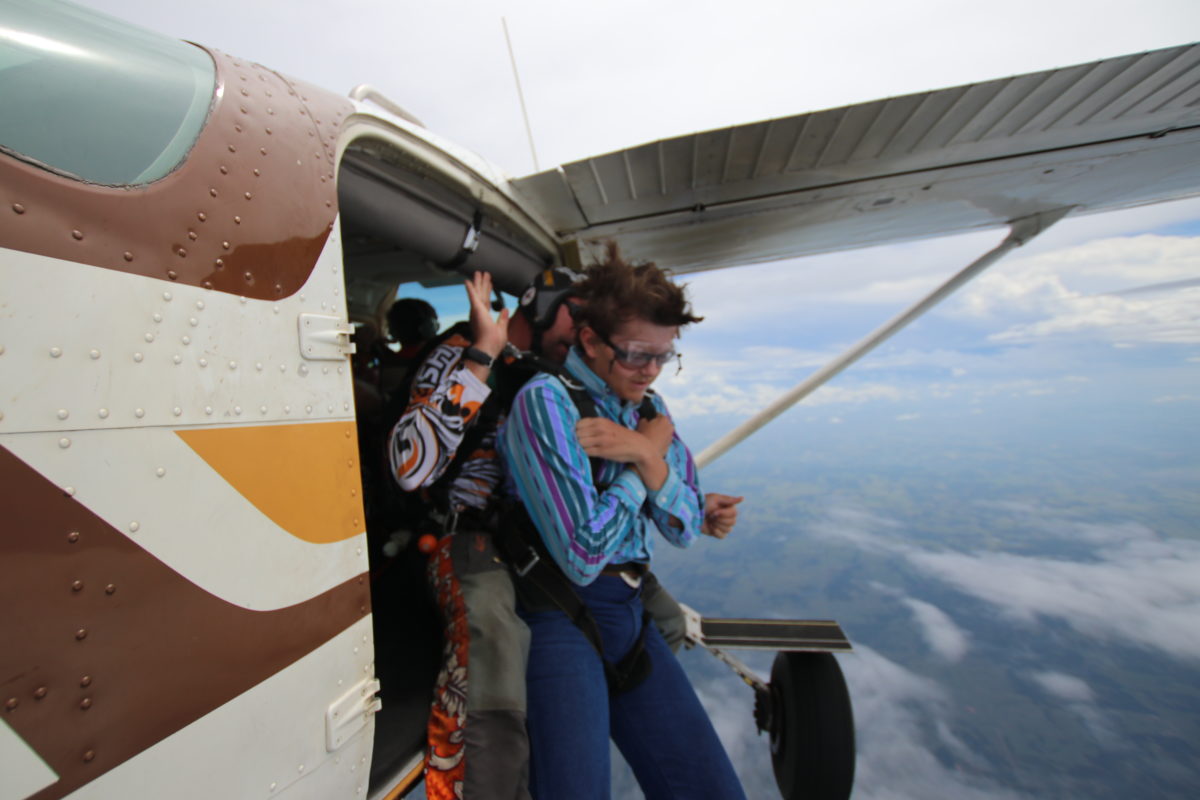
The Exit:
It’s common to think that when you leave the plane you will feel the same weird, stomach-churning sensation as when you ride a rollercoaster. Fortunately, this is not at all how it feels. On a roller coaster, you very quickly transition from sitting still to moving crazy fast (or down or backwards; gulp). But when you skydive, you transition from a fast-moving plane to fast-flying freefall. You don’t feel like you’re falling – you feel like you’re floating. Ahhhh.
Freefall:
Done from a deliberate position, freefalling at 120 mph feels awesome! As you’ll learn during the pre-flight briefing, it’s called the skydiving arch and it kind of resembles a banana – belly-to-earth; heads, hands and feet elevated to the sky. This position enables stability and allows the air rushing up toward you and your instructor to feel supportive as you soar across the big blue yonder.
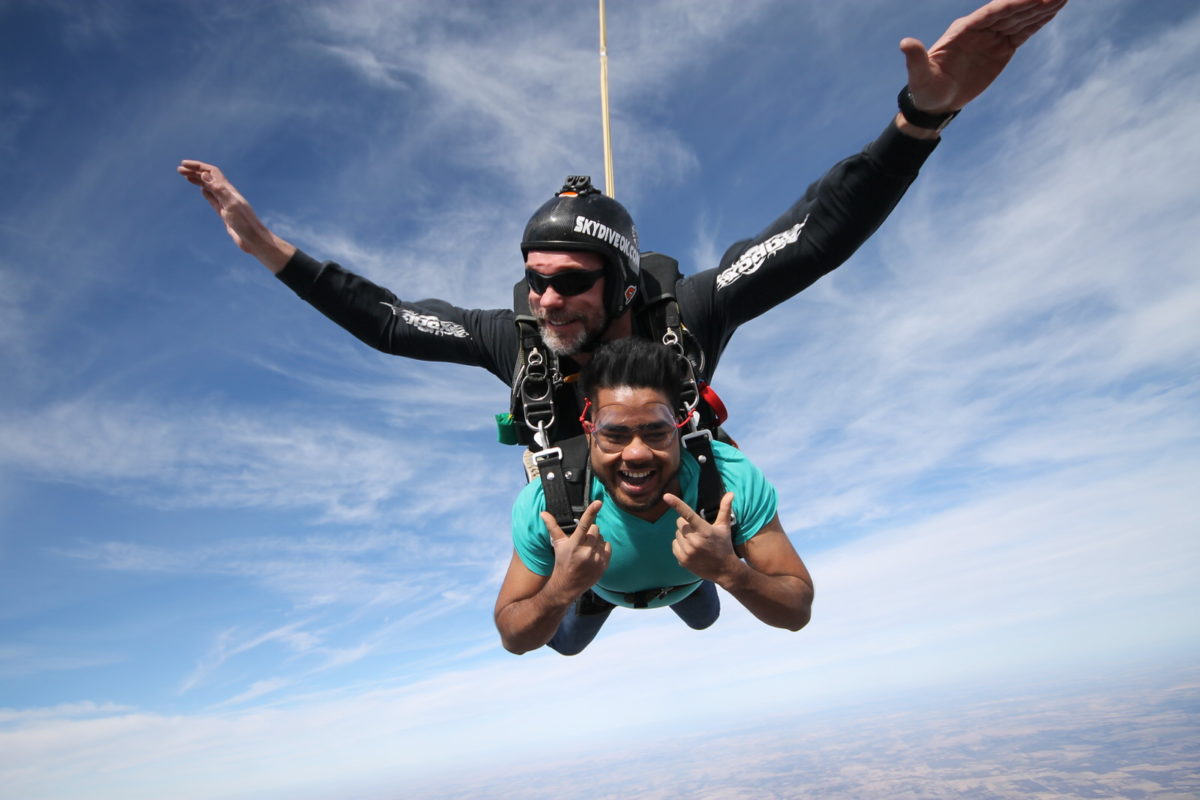
Deployment:
Parachutes are designed to open in stages in order to slow you down from terminal velocity in a controlled manner as your body moves from a horizontal to vertical axis. If you have seen video footage of skydiving deployments, you might think the parachute snaps open and you fly up super fast. It is fast, but not so herky jerky as it might seem. In reality, the camera flyer continues to fall at freefall speed while the tandem pair shifts to canopy flight.
The Parachute Ride:
When you fly under a parachute, you are connected to it from the shoulders – and it feels both secure and comfortable. Your instructor is in control, guiding you back to the landing area. Parachutes can be flown gently, providing a relaxing ride that lets you take in the view, or they can be flown more adventurously, including dives and spirals. Tell your instructor what you’re up for … or not. You may be offered the opportunity to steer too.
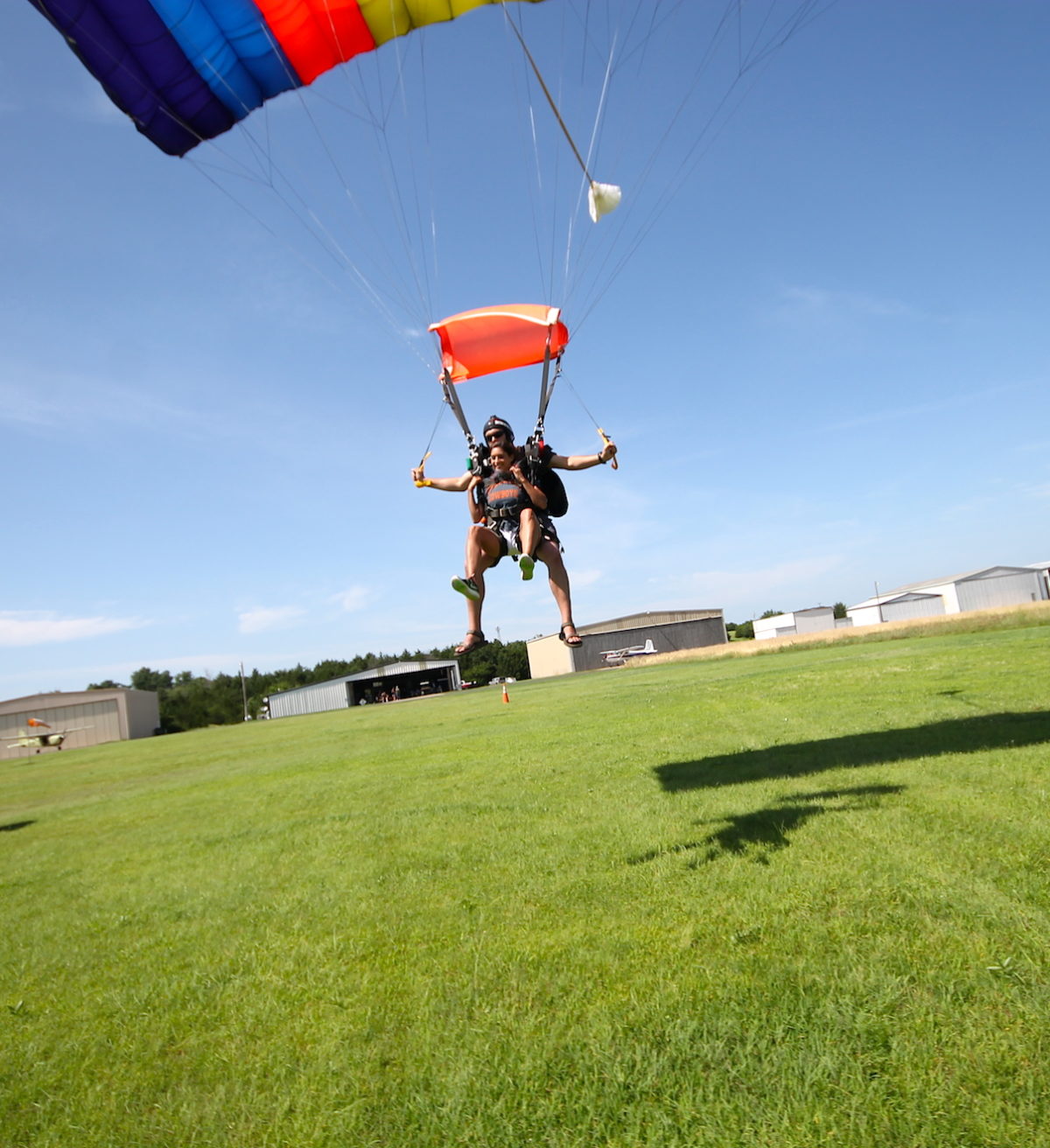
the Landing:
It’s tricky to land standing up while harnessed together, so for tandem skydives you usually land via butt slide. To do this you need to pick your legs up at the waist and keep them straight out in front – just as you’re taught during the briefing. This position is easy to do for the handful of seconds required just before you land, and allows for a super smooth touchdown. Don’t be nervous about getting the timing right – your instructor will let you know exactly when to do it.
…
Skydiving is the original extreme-sport-bucket-list item for good reason. It’s accessible, indescribably awesome, and it will leave you with memories to last a lifetime. Here at OKC, we take pride in applying our in-depth knowledge, hands-on experience, and more than 50 years in the industry to make your tandem skydiving experience comfortable and enjoyable. Come jump with us!
Copyright © 2024, Oklahoma Skydiving Center, All Rights Reserved.
DropZone Web Design & Marketing by Beyond Marketing, LLC





